
| Theme: Clinical | |||
 |
||||||
| An Assessment of Ward Rounds and Clinics for Medical Students in their Child Health Block |
 |
|||||
|
||||||
Ward rounds and clinics are an integral part of medical student learning and often the foundation of structured clinical placements.1,2 They utilise experimental learning theory whereby learning is often most effective through experience, however these are often variable.3
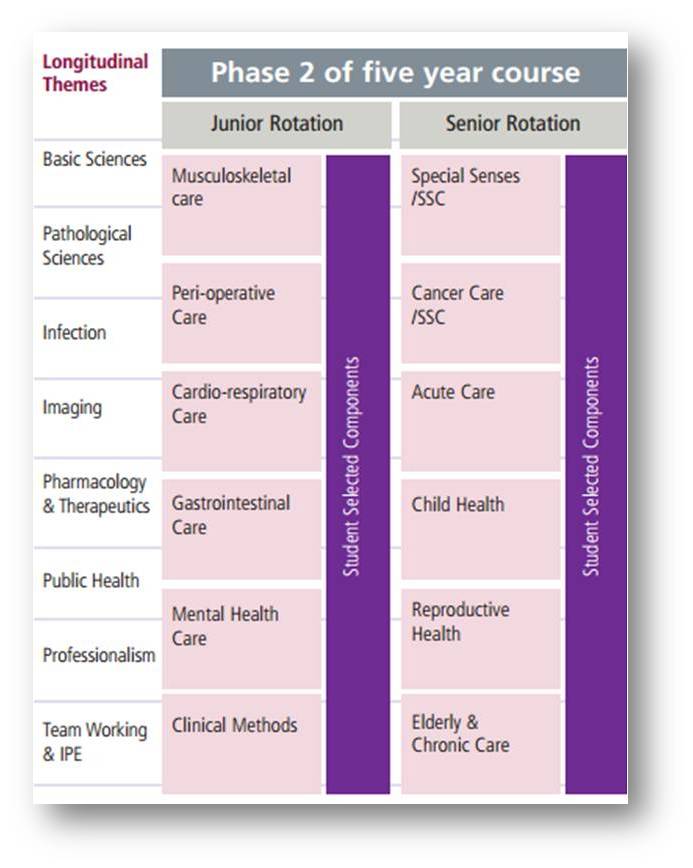
Final year medical students at Leicester Medical School have a 7 week rotation in Paediatrics (Child Health Block), which should equip them with the tools to be safe and competent with future clinical encounters with children.
There are specific clinical skills set out in the learning outcomes of the module that they cannot acquire without valuable patient and consultant contact.
Previous electronic feedback highlighted that experiences are variable, some views are that students stay in the background and do not learn much.
This study assessed whether these environments helped students learn key Paediatric clinical skills such as history taking, examination, communication and management of specific conditions. It also looked at what attributes of the teacher contributed to a good learning experience.4
1. The majority of students found ward rounds and clinics useful and enjoyable (Figure 1)
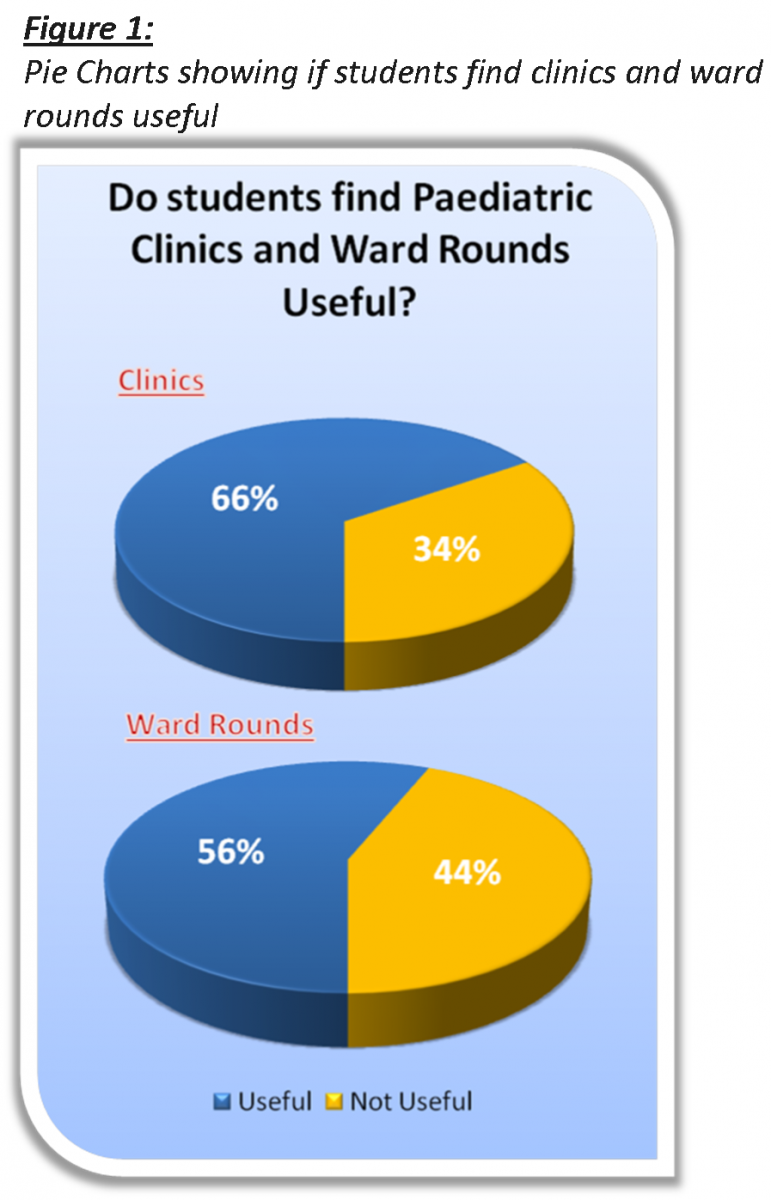
At Leicester Medical School, students in the 7 weeks Child Health Block are encouraged to attend 2 ward rounds and 2 clinics per week.
One block of medical students completed a questionnaire 3 weeks into their placement (n=32, 100% response rate), which provided both quantitative and qualitative data.
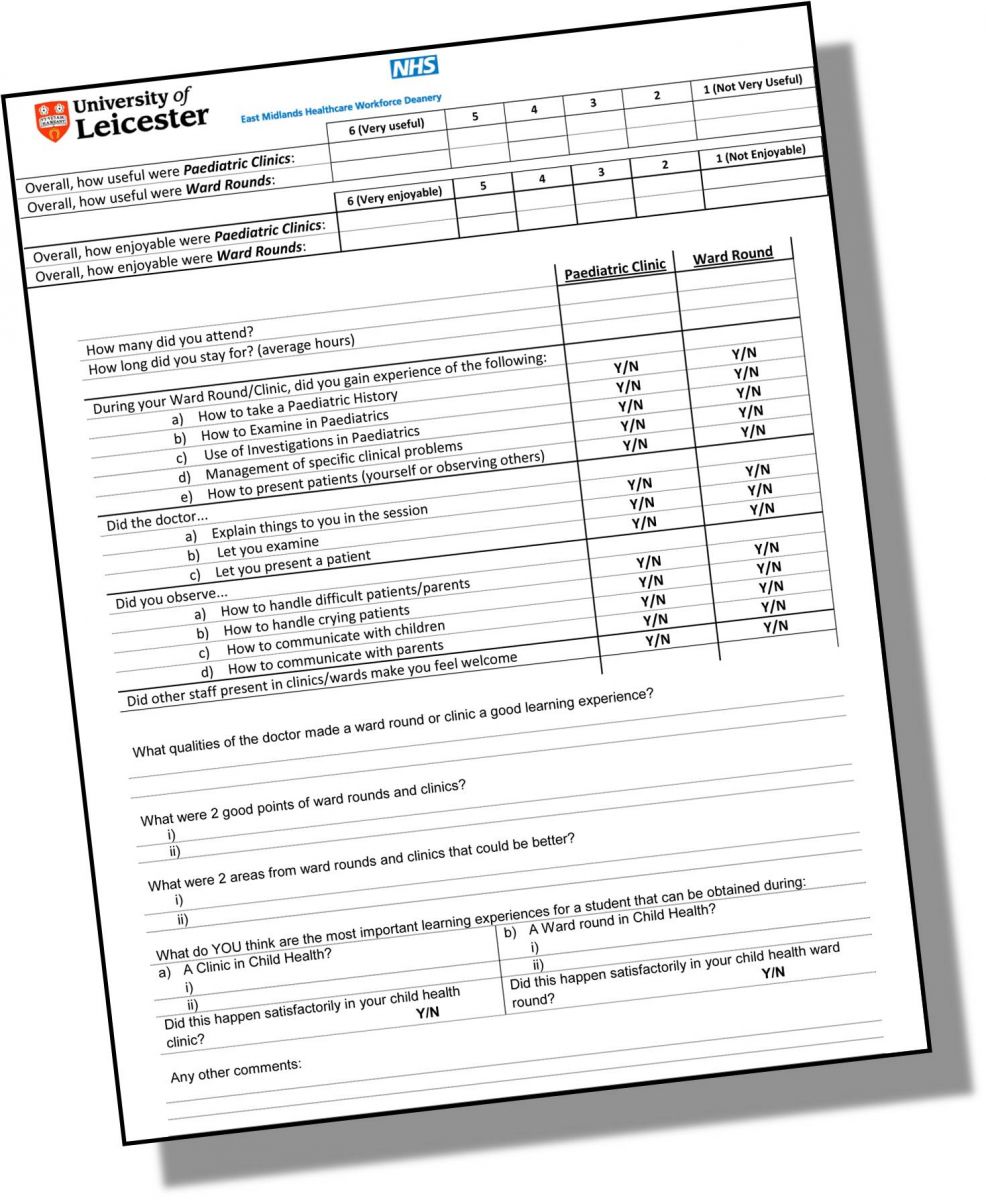
1. With e-learning becoming very popular, students still find that ward rounds and clinics create useful student learning experiences in the Child Health Block. They should therefore continue to be an essential component of clinical placements
1. General Medical Council (2009) Tomorrow’s Doctors, Outcomes and standards for undergraduate medical education
2. General Medical Council (2011) Clinical Placements for medical students, Advice supplementary to Tomorrow’s Doctors (2009)
3. Craze J et al (2006) Teaching medical students to examine children. Archives of Disease in Childhood, 91; 966-968
4. Gibson J (2009) The five ‘Es’ of anexcellent teacher. The Clinical Teacher, 6; 3-5

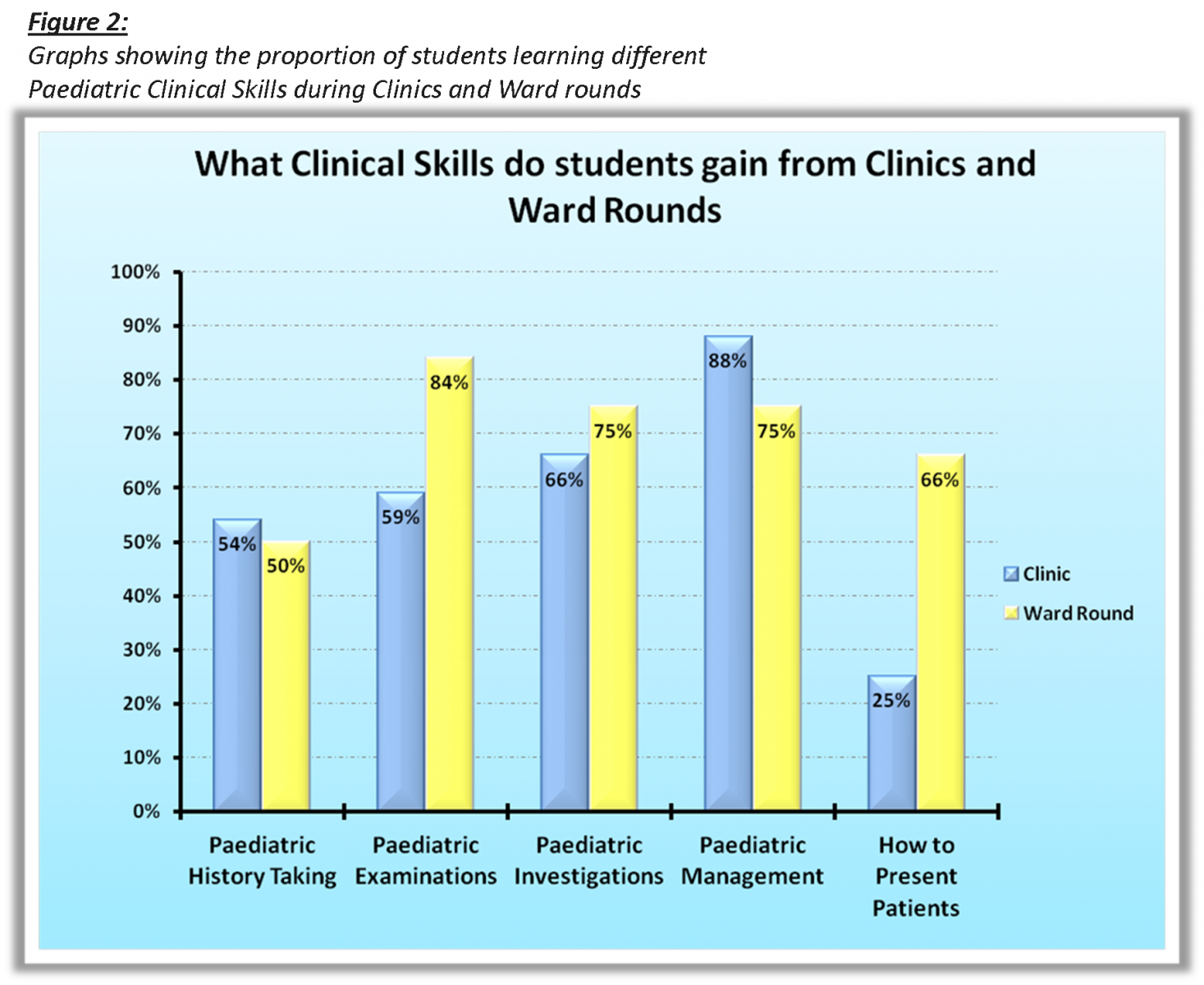
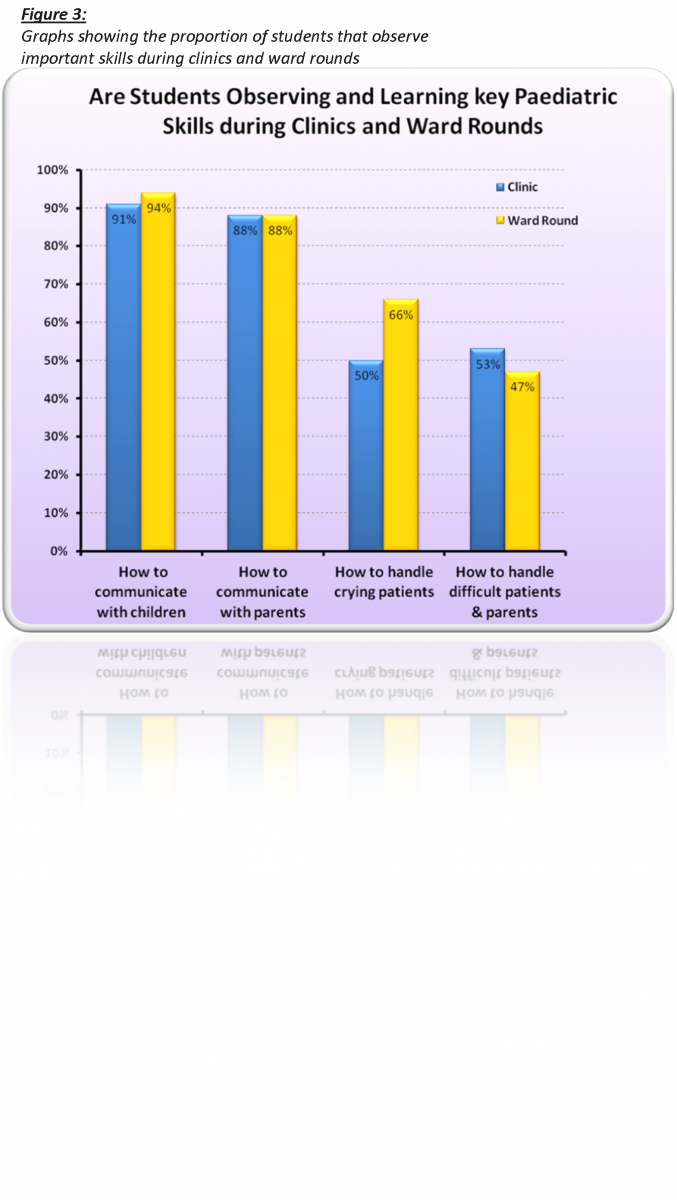
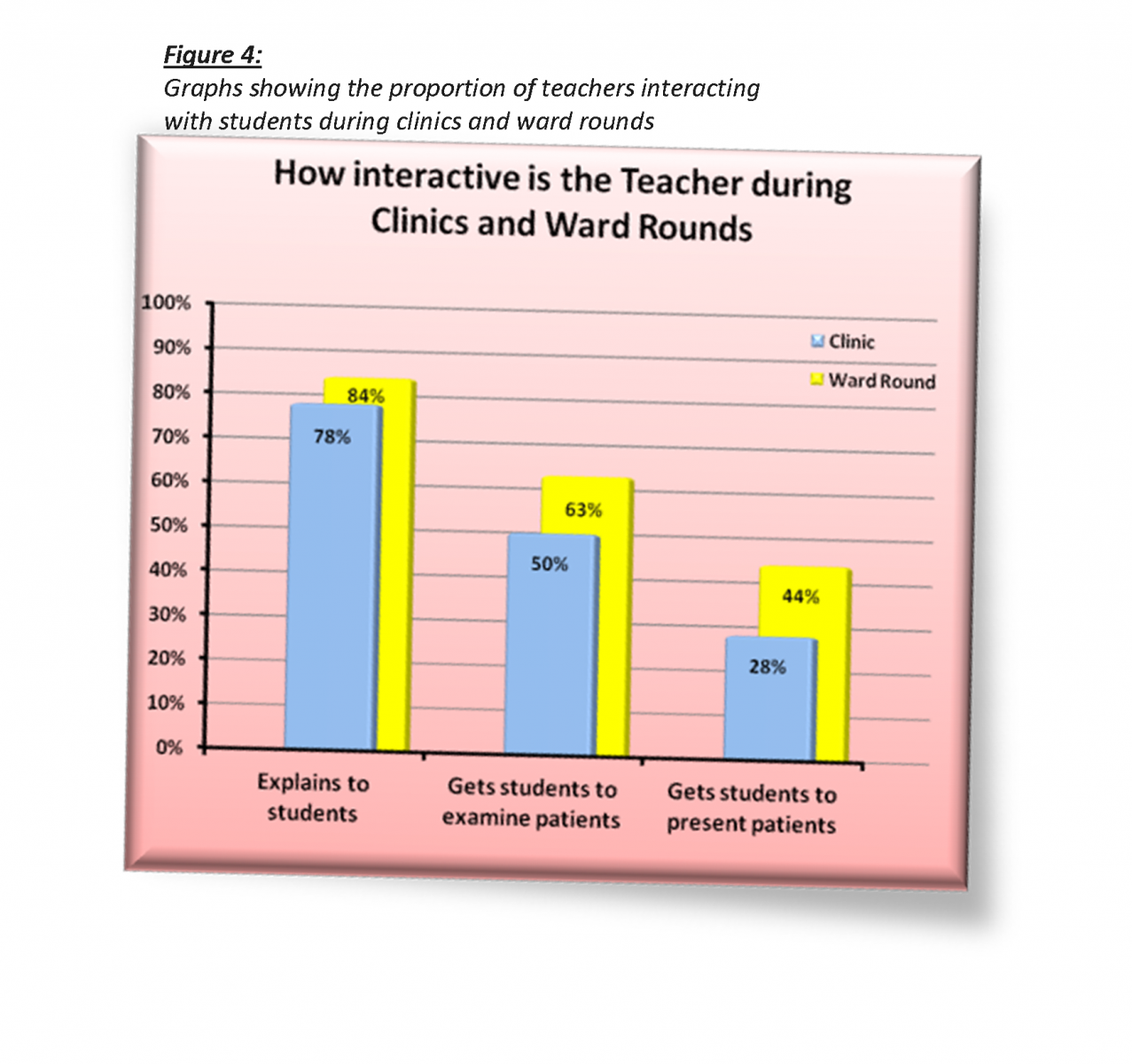
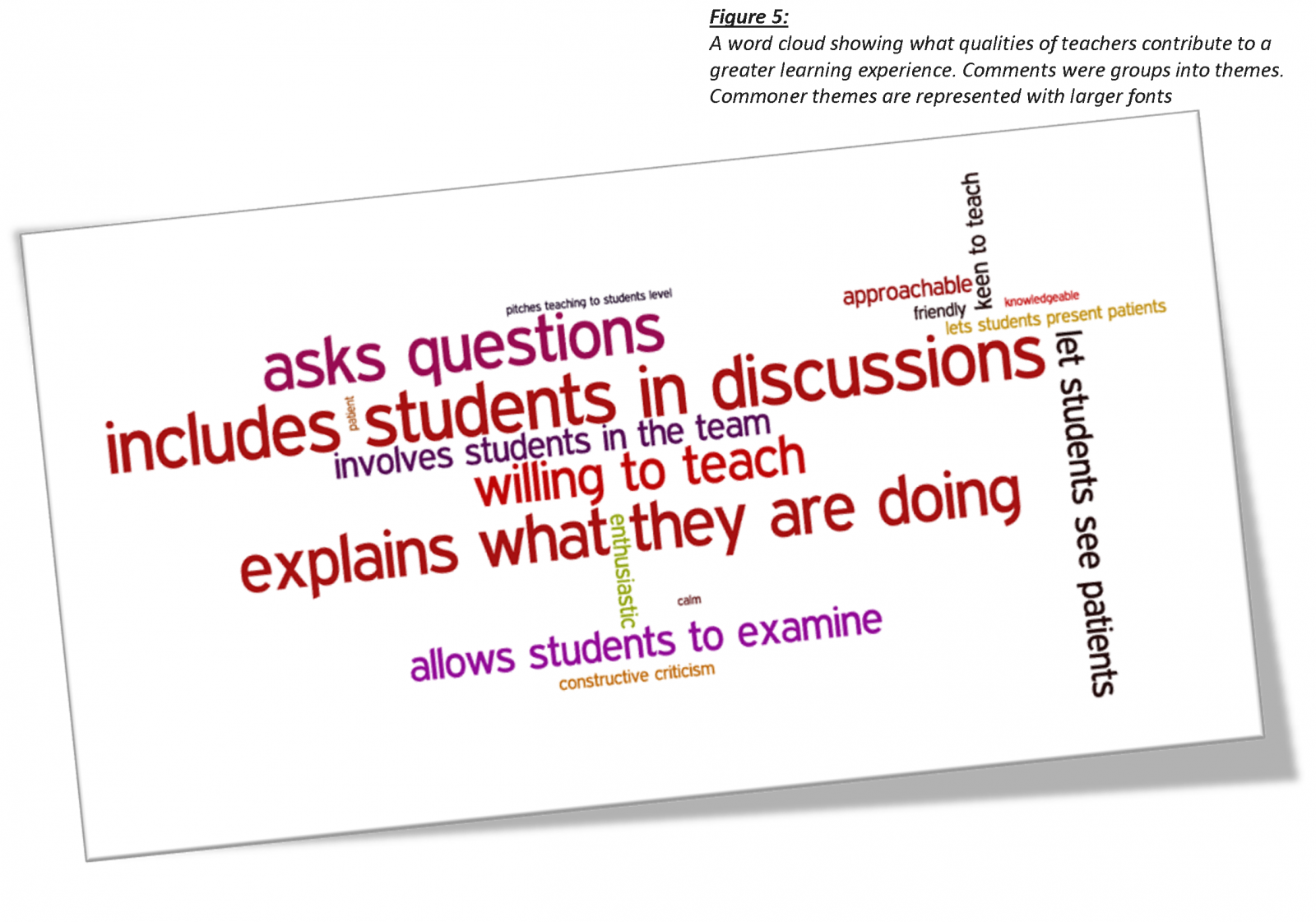
 Send Email
Send Email